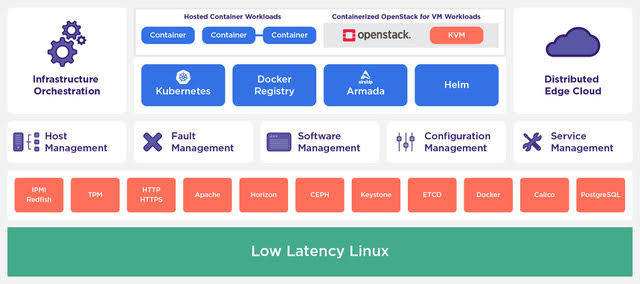OSF Preps Kata Containers Support for StarlingX Edge Computing Platform
The OpenStack Foundation (OSF) is gearing up to deliver later this year an update to StarlingX, an edge computing platform that will add support for Kata Containers along with forthcoming additional containerization of core services.
At its core, StarlingX combines OpenStack with Kubernetes, Linux, KVM virtual machine, Ceph storage software and Libvirt management tool to create an edge computing platform. Kata Containers is an open source container runtime based on an instance of the Containerd runtime running on a lightweight virtual machine that ensures isolation between containerized applications.
Version 4.0 of StarlingX also will be integrated with the Ussuri version of OpenStack, which launched last month. That update added support for the Kuryr project for integrating OpenStack with container networking and support for the CRI-O image specification for Kubernetes running a Zun container runtime that makes it easier to manage application containers deployed on OpenStack platforms.
Most containers today are deployed on virtual machines that were designed originally to be deployed either in a local data center or on a cloud computing platform. Kata Containers provides a lighter-weight alternative that not only consumes fewer resources but is also better-suited to be deployed on edge computing platforms.
Ildiko Vancsa, ecosystem technical lead for the OSF, says now that StarlingX has become a top-level project within the OSF, work on integrating OpenStack and container technologies should accelerate. As applications become more distributed, IT teams need to be able to seamlessly deploy applications on platforms at the edge as easily they do in the cloud or local data center, she says, noting that goal becomes easier to accomplish using OpenStack as the control plane across what is now an extended enterprise.
Much like IT teams that have embraced VMware, organizations that have employed OpenStack to provision and manage open source virtual machines are now also embracing containers. In some cases, containers wind up being deployed on bare-metal machines to optimize performance. In other cases, security concerns result in containers being deployed on top of virtual machines. Kata Containers are trying to strike a middle ground by ensuring security using lighter-weight virtual machines in a way that minimally impacts application performance.
Kata Containers themselves are a work in progress, with a significant update from the OSF expected later this year.
In the meantime, IT organizations find themselves managing increasingly diverse environments made up of multiple classes of container runtimes running alongside different types of virtual and bare-metal machines. At the same time, serverless computing frameworks are becoming part of the distributed computing landscape. As IT organizations employ all these frameworks and services, the overall IT environment becomes that much more complex to manage. At the same time, however, applications running on top of that IT infrastructure wind up becoming more flexible, resilient and secure.
It’s too early to say to what degree OpenStack might emerge as the lynchpin for integrating all these frameworks and services. However, given all the time, money and effort that has been invested in OpenStack, it’s fair to expect that many organizations would rather extend OpenStack than replace it.




